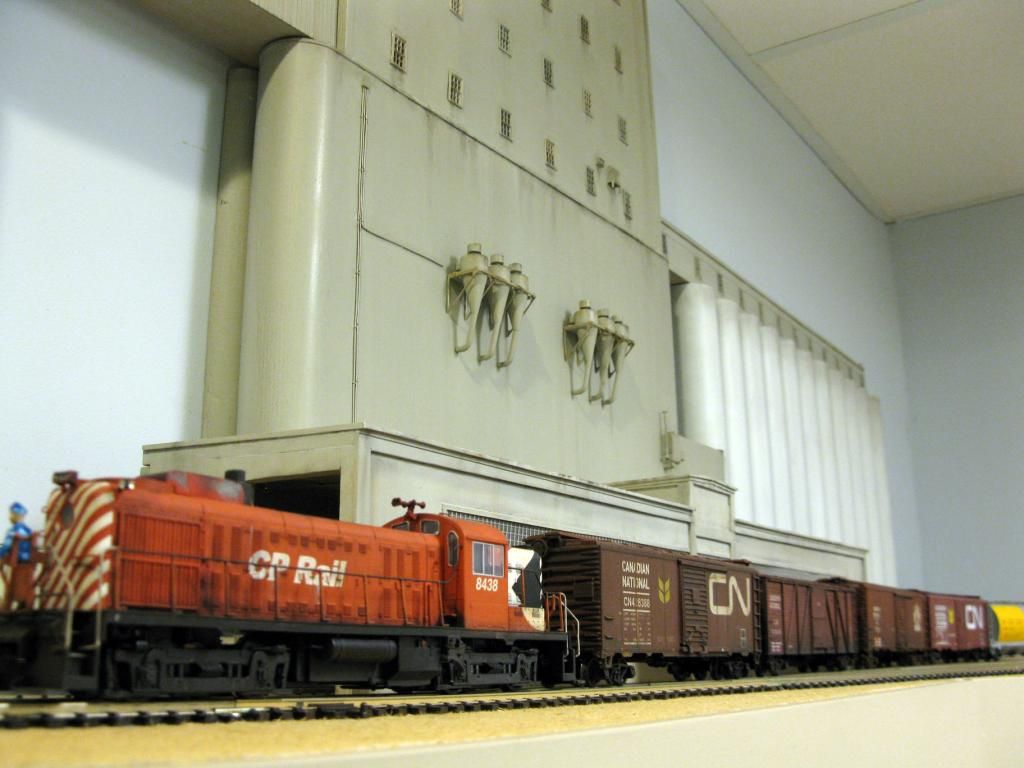Some would think that switching eras, particularly moving from the 50s to the 70s, would mean a loss in charm and historic background. But when you think about it, you find out this era was thriving and full of details that make model railroading so exciting and fun...
The 1960s
and 1970s were tough years for railroading in Quebec City area. At that time,
important cuts affected passenger services prior to VIA Rail, including the
closure of St. Raymond and Murray Bay Subs and discontinuation of service on
Quebec Central. But the most drastic change was closure of historic CPR Palace
Station in the wake of an ill-conceived urban renewal projects featuring
highway junctions sprawling over the former transportation hub. Tracks in
downtown were removed up to Cardona junction, now a simple track leading to
Wolfe’s Cove tunnel. Lack of interest
about sustainable transportation, in particular railways, was underscored by
the new location of Quebec City passenger terminal in a decaying WW2 industrial
neighbourhood located in the middle of nowhere and not linked to bus routes.
That new station’s life would be as short as can be and was quickly closed by
VIA Rail. That epoch also saw the destruction of most railway structures still
standing in the area, including virtually all train stations and service
facilities. One could have though was definitely done over railways.
At the same
time, CPR was trying to diversify its activities by implementing an important
container business at Wolfe’s Cove. It didn’t last long but still was a thriving
source of traffic for the time. At the same time, CPR was also fancying the
idea to ferry cars to Quebec North Shore. A new pier was under construction
when the deal fell through. The new ferry would be located in Matane and
operated by arch-rival CNR.
Meanwhile,
CNR operation in the area were still the same as the 50s, even if the downtown
core businesses were closing down one after another. Most subdivisions were intact and profitable
at some extent, including textile, cement and paper industries. At this time, a
decade before Ultramar built a refinery at St. Romuald, Wolfe’s Cove was
covered by dozen of oil tanks were another source of recurrent rail traffic.
This era
was also best characterized by many attempts by CNR and CPR to modernize their corporate
image with mixed results. The colourful new schemes, side by side with older designs
weathered by times, created a mosaic bringing together two worlds. It wasn’t
unusual to take a glimpse at a glamorous but faded yellow and green CNR locomotive
lashed up with a dramatic and contrasting orange and black engine sporting the
undying “wet noodle” cleverly designed by Fleming. Later, CPR would make its
own bold statement by unveiling the CP Rail era with its mind boggling
Multimark logo. Ill-fated and despised by hard core followers, one must still
admit it was the most coherent answer to CNR made by CPR executives since the
50s.
At the same
time, car designs evolved quickly in size, specialization and shape. Iconic
Canadian rolling stock like slabside hoppers, cylindrical hoppers, modern
all-steel caboose were shaping a truly indigenous railway landscape. It was
also the last days of large scale competition on diesel locomotive market with
manufacturers such as MLW and CLC still in business. In that respect, another
Canadian feature, now a staple of North American railways was introduced: the
safety cab, known as the wide nose cab. Appearing on iconic locomotives such as
M420 and GP40, it spread like a wildfire across the continent. Meanwhile,
larger 3-axle designs were hitting the rail, including Alco Century series.
No wonder
the 60s and 70s were a pivotal era of railroading, as much as the golden 50s.
It was a time of modernization, rationalization and reorganization that would
bring our actual understanding of a freight-oriented train world.

No comments:
Post a Comment